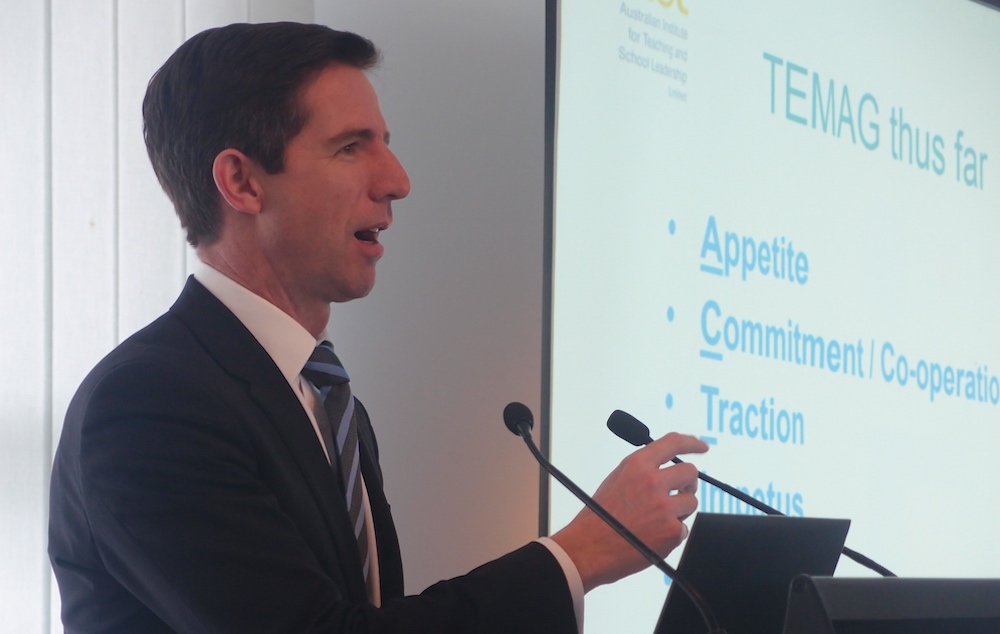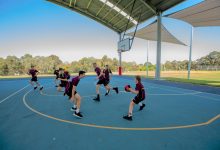
There is a major flaw in the way we currently assess school students. By labelling them as either “good” or “poor” learners based on their overall grades at the end of each year, students have no clear idea whether they are making progress over extended periods of time.
We need to move away from focusing on what grade a child will get at the end of a year, to assessing the progress that students make over time.
How students are assessed
This is how most parents, teachers and students likely view the school process:
It begins with a curriculum that spells out what teachers should teach and students should learn in each year of school.
The role of teachers is to deliver this curriculum by making it engaging and meaningful, and ensuring that all students have an opportunity to learn what the curriculum prescribes.
The role of students is to learn what teachers teach, and it is accepted that some students – the better learners – will learn more of this than others.
The role of assessment is to establish how well students have learnt what teachers have taught. This can be done at the end of a period of teaching such as a semester or school year. Such assessments are sometimes called “summative” or assessments of learning.
Alternatively, assessments can be undertaken during teaching to establish how well students have learnt so far. These assessments are sometimes called “formative” or assessments for learning, because they provide information about gaps in learning and material that may need to be retaught.
Students are then graded on how well they have learnt the curriculum for their year level. Those who can demonstrate most of this curriculum receive high grades; those who demonstrate relatively little receive low grades.
Unintended consequences
In support of this way of organising teaching and learning is the argument that the best way to raise achievement levels in schools is to set clear curriculum standards for each year of school, rigorously assess how well students meet those expectations and report performances honestly and fearlessly. If a student has failed, say so.
All of this may be appropriate if all students in each year of school began the year at the same starting point. This is patently not the case.
In any year of school, the gap between the most advanced 10% of students and the least advanced 10 percent is the equivalent of at least five to six years of school. If school were a running race, students would begin the year widely spread out along the running track. Despite this, all students would be judged against the same finish line (the year-level expectations).
And the consequences are predictable. Students at the back of the pack, who are two or three years behind the bulk of students and the year-level curriculum, struggle and generally achieve low grades, often year after year.
A student who receives a “D” this year, a “D” next year and a “D” the year after is given little sense of the progress they are actually making and, worse, may conclude that there is something stable about their ability to learn (they are a “D student”). Many of these students eventually disengage from the schooling process.
At the front of the pack, more advanced students generally begin the school year on track to receive high grades. Many receive high grades on the middling expectations for their age group without being overly stretched or challenged. There is evidence that least year-on-year progress is often made by these students.
An alternative – monitoring learning
An alternative is to recognise that the fundamental purpose of assessment is to establish and understand where individuals are in their long-term learning progress at the time of assessment.
This usually means establishing what they know, understand and can do – something that can be done before, during or after teaching, or without reference to a course of instruction at all.
Underpinning this alternative is a belief that every learner is capable of further progress if they can be engaged, motivated to make the appropriate effort and provided with targeted learning opportunities.
This is a more positive and optimistic view than a belief that there are inherently good and poor learners as confirmed by their performances on year-level expectations.
It also recognises that successful learning is unlikely when material is much too difficult or too easy, but depends instead on providing every learner with well-targeted, personalised stretch challenges.
A good understanding of where students are in their learning provides starting points for teaching and a basis for monitoring learning progress over time.
One of the best ways to build students’ confidence as learners is to help them see the progress they are making over extended periods of time.
A focus on monitoring learning encourages a long-term perspective. Rather than being defined only in terms of year-level expectations, successful learning is defined as the progress or growth that students make over time.
Under this approach, every student is expected to make excellent progress every year towards the achievement of high standards – regardless of their current levels of attainment.
This piece was written by CEO, Australian Council for Educational Research. The article was originally published on The Conversation.







